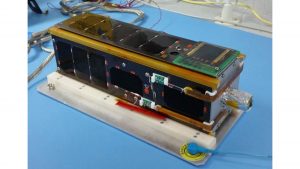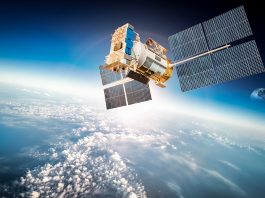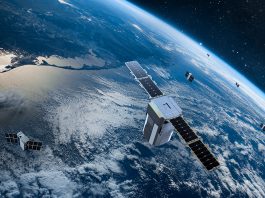New research from the Universities of Surrey and Swansea suggests that it is viable to develop large, low-cost solar farms in space.
The first of its kind study tracked a satellite over six years, examining how the panels generated power and weather solar radiation over 30,000 orbits.
The findings, published in the journal Acta Astronautica, could pave the way for commercially viable solar farms in space.
The development of new solar panels
Scientists from the University of Swansea’s Centre for Solar Energy Research designed new solar cells using cadmium telluride. The new panels are more lightweight, cover a larger area, and provide far greater power than current technology. They are also relatively cheap to manufacture.
University of Surrey researchers developed instruments that measured the performance of the panels in orbit. The satellite was designed and built at the Surrey Space Centre, in collaboration with a team of trainee engineers from the Algerian Space Agency.

Professor Craig Underwood, Emeritus Professor of Spacecraft Engineering at the Surrey Space Centre at the University of Surrey, said: “We are very pleased that a mission designed to last one year is still working after six. These detailed data show the panels have resisted radiation and their thin-film structure has not deteriorated in the harsh thermal and vacuum conditions of space.
“This ultra-low mass solar cell technology could lead to large, low-cost solar power stations deployed in space, bringing clean energy back to Earth – and now we have the first evidence that the technology works reliably in orbit.”
The findings prove that solar farms in space could be commercially viable
Although the power of the cells’ output became less efficient over time, the team believe that the findings will show that solar power satellites work. There is therefore potential for solar farms in space to become commercially viable.
Dr Dan Lamb from the University of Swansea concluded: “The successful flight test of this novel thin film solar cell payload has leveraged funding opportunities to further develop this technology.
“Large area solar arrays for space applications are a rapidly expanding market and demonstrations such as this help to build on the UK’s world class reputations for space technology.”









